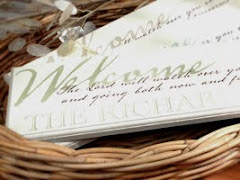A sight such as this…is beautiful, but rarely seen…

Most families lack the land, the time, and the knowledge to host a large, traditional garden of vegetables lined up in proud rows ready to fight against sun, wind, and whatever comes there way until harvest.
For the last couple of decades, vegetable gardening has been a quiet sport contended by retirees or the rare few, but it is now ‘en vogue’ to think local, think healthy and of course – think green.
As a result more and more families are thinking outside of the box formerly known as the vegetable garden…

Would you believe there are 5 tomato plants, 3 pepper plants, 10 onion sets, a handful of herbs and even a blueberry bush growing among this landscape of ornamental grasses and newly planted cutting flowers?

Of course container gardening is also a hot topic!!
If you already have decorative planters of flowers, consider mixing lettuce for cutting such as “Black-seeded Simpson” or “Buttercrunch” creating edible greenery in your containers. For a punch of color consider “kale” or “swiss chard”.
Some gardeners are creating signature touches by including a  strawberry plant or pepper plant in each container they have…can you imagine…a bright red strawberry!!! What a wonderful surprise!!!
strawberry plant or pepper plant in each container they have…can you imagine…a bright red strawberry!!! What a wonderful surprise!!!
Thoughts to consider when planning your vegetable garden:
- What do you want?
Spend some time at dinner one evening jotting down all that the fruits and vegetables you would like to grow. The next night, highlight your top priorities on the list.
- How much time?
Write down how much time you can dedicate each day and each week to tending…including watering, weeding, and harvest.
- How much space?
Decide how many containers how many sections of your yard or current flower beds you can dedicate.
After you have this information on paper, draw a sketch of the spaces you are considering.
-Highlight or shade orange areas that are full sun or receive sunlight in morning and afternoon
-Highlight or shade yellow areas that are part sun (shaded partially in either afternoon or morning)
- Highlight or shade blue areas that are mostly shady
Now you can match up the types of plants from your priority list that match that spaces you currently have available. A little pocket here and there can really put to use when you have the right plants in the right place.
Helpful Hint: For busy gardeners, put your plants near areas that you use…walkways, patios, and near the most common entrance of your home. This will make it easier to water and not forget your plants when your schedule gets hectic!

Success is motivating.
Start small.
Think outside the box.
When you enjoy the fun and taste of harvest…you will want to add more next year!
For more on starting your vegetable garden on a budget…consider Starting Seeds with a little help from Dr. Earth!
























 Fill a bucket with water. Use 1 cup of Dr. Earth Starter Fertilizer for every gallon of water. (A good method is to use 5 cups in a 5 gallon bucket)
Fill a bucket with water. Use 1 cup of Dr. Earth Starter Fertilizer for every gallon of water. (A good method is to use 5 cups in a 5 gallon bucket)







